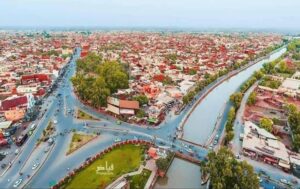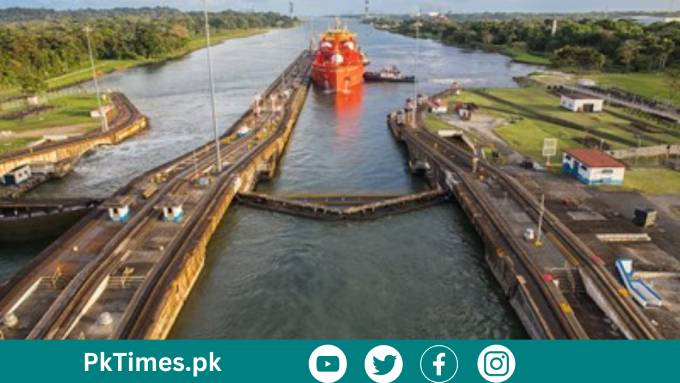How Many Canals Are There in Pakistan: Pakistan’s canal system stands as a testament to its rich agricultural heritage and the vital role water plays in sustaining its economy and livelihoods. From the mighty Indus River to its tributaries and distributaries, Pakistan’s canal network forms the backbone of its irrigation infrastructure. In this blog post, we’ll explore the intricacies of Pakistan’s canal system, examining the major canals, their historical significance, and the challenges they face in the modern era.
The Indus River System: Backbone of Pakistan’s Canals
At the heart of Pakistan’s canal system lies the Indus River, one of the longest rivers in Asia. Alongside its tributaries—the Jhelum, Chenab, Ravi, and Sutlej rivers—the Indus forms the lifeline of Pakistan’s agricultural economy. The historical development of the canal network along the Indus River, dating back centuries, has enabled the transformation of arid lands into fertile agricultural fields, supporting millions of livelihoods across the country.
Major Canals in Pakistan
The Indus Canal, often referred to as the “Great Canal,” is the largest and most significant canal in Pakistan. Stretching over thousands of kilometers, it serves as the main artery of the Indus Basin Irrigation System, facilitating the distribution of water to agricultural lands across Punjab and Sindh provinces. Other major canals, such as the Jhelum, Chenab, Ravi, and Sutlej canals, play crucial roles in water distribution and management, contributing to the prosperity of the regions they traverse.
Secondary Canals and Distributaries
In addition to the major canals, Pakistan’s canal system comprises a network of secondary canals and distributaries that further extend the reach of irrigation water to farmlands. These secondary canals branch off from the main arteries, delivering water to smaller agricultural plots and communities. Distributaries, which divide water from the main canals into smaller channels, play a vital role in ensuring equitable water distribution and maximizing agricultural productivity.

Challenges and Issues Facing Pakistan’s Canal System
Despite its historical significance and economic importance, Pakistan’s canal system faces numerous challenges in the modern era. Water scarcity, exacerbated by climate change and population growth, poses a significant threat to the sustainability of irrigation agriculture. Environmental degradation, including water pollution and soil erosion, further compounds the challenges facing Pakistan’s canal system. Moreover, governance and management issues, such as water theft and inefficient water use, hinder efforts to optimize the canal network’s potential.
Future Outlook and Potential Solutions
Addressing the challenges facing Pakistan’s canal system requires a multi-faceted approach that combines investments in water infrastructure, adoption of sustainable water management practices, and leveraging technology for improved water distribution and usage. Investments in modernizing and upgrading the canal infrastructure, including lining canals to reduce water seepage and losses, can improve water efficiency and mitigate scarcity. Additionally, promoting water conservation practices among farmers and communities, such as drip irrigation and crop rotation, can help optimize water usage and reduce environmental impacts.
Conclusion
In conclusion, Pakistan’s canal system represents a remarkable feat of engineering and a cornerstone of its agricultural economy. From the ancient irrigation works of the Indus Valley civilization to the modern canal networks that crisscross the country, water has been central to Pakistan’s development and prosperity. However, as Pakistan grapples with the challenges of water scarcity and environmental degradation, sustainable management and conservation efforts are crucial to ensuring the continued resilience and viability of its canal system. By embracing innovation and collaboration, Pakistan can navigate the waters of the future and sustainably harness its canal system for the benefit of present and future generations.
Read more: how many rivers in Pakistan
FAQ’s
- How many canals make up Pakistan’s irrigation system?
Pakistan’s irrigation system consists of a vast network of canals, including major arteries such as the Indus Canal, Jhelum Canal, Chenab Canal, Ravi Canal, and Sutlej Canal, along with numerous secondary canals and distributaries. While it’s challenging to provide an exact count of all the canals in Pakistan due to the extensive nature of the network, these major canals, along with their branches and distributaries, form the backbone of Pakistan’s irrigation infrastructure.
- What is the significance of Pakistan’s canal system for agriculture and the economy?
Pakistan’s canal system plays a crucial role in sustaining its agricultural economy, which is the backbone of the country’s economy and supports millions of livelihoods. The canals facilitate the distribution of water for irrigation across vast agricultural lands, enabling farmers to cultivate crops and produce food for domestic consumption and export. Additionally, the availability of water from the canal system supports various industries, including textiles, manufacturing, and energy production, contributing to economic growth and development.
- What challenges does Pakistan’s canal system face, and how are they being addressed?
Pakistan’s canal system faces several challenges, including water scarcity, environmental degradation, and governance issues. To address these challenges, efforts are underway to modernize and upgrade the canal infrastructure, improve water efficiency through measures such as lining canals to reduce seepage, and promote sustainable water management practices among farmers and communities. Additionally, there is a growing focus on leveraging technology, such as remote sensing and GIS mapping, to optimize water distribution and usage and address governance issues such as water theft and corruption. Through concerted efforts and collaboration among stakeholders, Pakistan aims to ensure the sustainability and resilience of its canal system for future generations.


